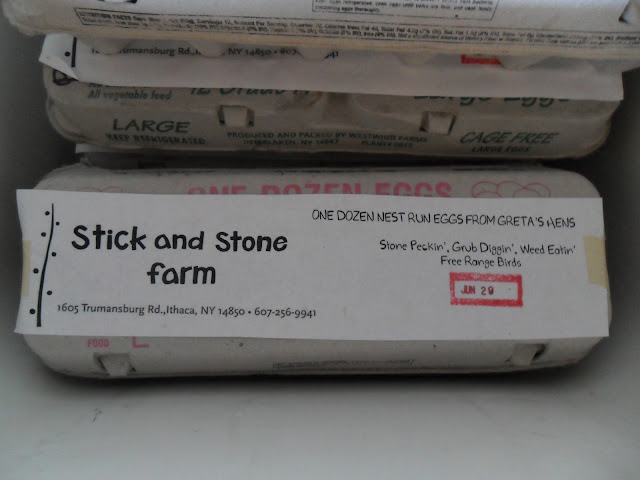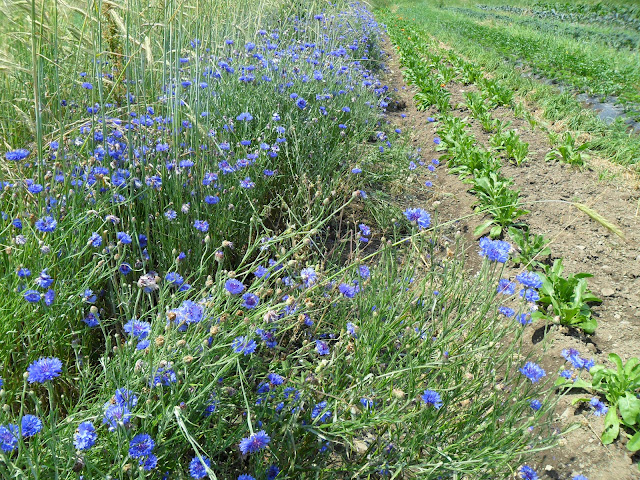One of my jobs is managing the Goodwood Community Centre garden. Some days it feels like a real job, most days it doesn't. On the best days I get to potter around with volunteers - harvesting, planting, weeding, pausing and thinking, wondering and wandering. I get to hang out with the playgroup kids and parents - getting our hands dirty, feeding the worms, making juice and building a scarecrow.
I get to teach and I get taught, regularly. The thing about gardening is the thing about everything. There are a million ways to do something and they are all the 'right way to do it'. Without strength of conviction, or a helluva lot of experience this can get kind of tedious. Our garden is a shared garden. People work together on plots, growing vegetables and fruit. Some people turn up every day offering to lend a hand. Others pass by the garden and call out their advice or their idea. One man, who has grown his own vegetables for most of his 90-odd years comes by every few weeks and passes on some wisdom. When to cut down the scarlet runners, how best to trellis the peas, when to plant potatoes. The idea of a shared garden makes sense when lots of people contribute but it can be hard to know which decisions to make, which direction to take. My idea of a garden is quite possibly a little more chaotic and rambly than someone else's.
There is a patch near the road which is covered in dandelions and Californian poppy. Some people think this is a weedy area that needs clearing. But when I look at it I see abundance and I see food! A lady who works just across the road comes by regularly with a knife and a plastic bag and collects the tender dandelion leaves for her dinner. Since being in Greece I learned that this is called 'horta' - wild greens - and is a traditional and common food. She cooks them up with a bit of olive oil, lemon juice and salt and pepper. I think she is one of the few people around here who recognises this nutritious food and cooks it on a regular basis. The Californian poppy is a plant that we cultivate carefully at the herb farm where I work and to see it growing so vigorously without any intervention is exciting. But to many this bunch of green is just a bunch of mess that needs tidying...so what to do? Who's advice to take? Who should be making these decisions anyway? What's the point?
I can get a little hung up on it all and end up in a kind of self-reflexive paralysis. Which isn't great when what I need to be doing is turning the compost or harvesting lettuce or sorting out the shed. Then it dawns on me. This is what it is about. Not the quantity of veges we grow, or the efficient functioning of the worm farm, it's not about how neat everything looks or how well timed our plantings are. The garden is as much a playground of ideas as anything. A place of focus where people can contribute, can argue, try new things, test something out, make mistakes, eat, get distracted, meet someone new, learn something, forget what they learned and just a place to hang around in. Especially if you don't really have anywhere else to go. And yep, I really want to encourage people to compost, to grow vegetables, to eat vegetables and fruit (and try varieties they have never heard of) but that's just my own agenda. The Goodwood garden has it's own life. It's animated by whoever plays and works in it, by the plants and trees, by animals and birds and insects - some so tiny we just have to have faith that they are there, by the wind, the rain and the sun. It takes different shapes over time, different hues and atmospheres.
My friend Sulyn says that as a gardener she is merely an editor. And in a shared garden that is particularly so. Though some days are frustrating and I feel like I'm getting nowhere and doing nothing and beating my head against a wall it is probably on these days that something really is happening. Maybe not something I can sum up in a paragraph, something that looks all rosy, wholesome and 'sustainable' for funding bodies. Nothing I can really quantify. Nothing I can properly evaluate. But something, nonetheless. Contradictions are rife, values and priorities are bouncing around and into each other...people are interacting. Activity! And it's complex and it's exciting and it's frustrating and it just happens.
And I'm just an editor, so I won't get ahead of myself.
I get to teach and I get taught, regularly. The thing about gardening is the thing about everything. There are a million ways to do something and they are all the 'right way to do it'. Without strength of conviction, or a helluva lot of experience this can get kind of tedious. Our garden is a shared garden. People work together on plots, growing vegetables and fruit. Some people turn up every day offering to lend a hand. Others pass by the garden and call out their advice or their idea. One man, who has grown his own vegetables for most of his 90-odd years comes by every few weeks and passes on some wisdom. When to cut down the scarlet runners, how best to trellis the peas, when to plant potatoes. The idea of a shared garden makes sense when lots of people contribute but it can be hard to know which decisions to make, which direction to take. My idea of a garden is quite possibly a little more chaotic and rambly than someone else's.
There is a patch near the road which is covered in dandelions and Californian poppy. Some people think this is a weedy area that needs clearing. But when I look at it I see abundance and I see food! A lady who works just across the road comes by regularly with a knife and a plastic bag and collects the tender dandelion leaves for her dinner. Since being in Greece I learned that this is called 'horta' - wild greens - and is a traditional and common food. She cooks them up with a bit of olive oil, lemon juice and salt and pepper. I think she is one of the few people around here who recognises this nutritious food and cooks it on a regular basis. The Californian poppy is a plant that we cultivate carefully at the herb farm where I work and to see it growing so vigorously without any intervention is exciting. But to many this bunch of green is just a bunch of mess that needs tidying...so what to do? Who's advice to take? Who should be making these decisions anyway? What's the point?
I can get a little hung up on it all and end up in a kind of self-reflexive paralysis. Which isn't great when what I need to be doing is turning the compost or harvesting lettuce or sorting out the shed. Then it dawns on me. This is what it is about. Not the quantity of veges we grow, or the efficient functioning of the worm farm, it's not about how neat everything looks or how well timed our plantings are. The garden is as much a playground of ideas as anything. A place of focus where people can contribute, can argue, try new things, test something out, make mistakes, eat, get distracted, meet someone new, learn something, forget what they learned and just a place to hang around in. Especially if you don't really have anywhere else to go. And yep, I really want to encourage people to compost, to grow vegetables, to eat vegetables and fruit (and try varieties they have never heard of) but that's just my own agenda. The Goodwood garden has it's own life. It's animated by whoever plays and works in it, by the plants and trees, by animals and birds and insects - some so tiny we just have to have faith that they are there, by the wind, the rain and the sun. It takes different shapes over time, different hues and atmospheres.
My friend Sulyn says that as a gardener she is merely an editor. And in a shared garden that is particularly so. Though some days are frustrating and I feel like I'm getting nowhere and doing nothing and beating my head against a wall it is probably on these days that something really is happening. Maybe not something I can sum up in a paragraph, something that looks all rosy, wholesome and 'sustainable' for funding bodies. Nothing I can really quantify. Nothing I can properly evaluate. But something, nonetheless. Contradictions are rife, values and priorities are bouncing around and into each other...people are interacting. Activity! And it's complex and it's exciting and it's frustrating and it just happens.
And I'm just an editor, so I won't get ahead of myself.























































